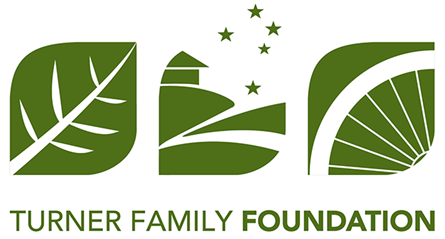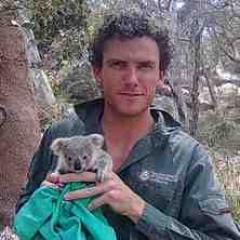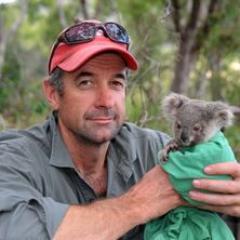Background
Koalas are a nationally endangered arboreal species that depend on species of Eucalypt for their ecological requirements. However, in the last 200 years, intensive habitat clearing for farming and urbanisation has severely reduced the amount of suitable habitat available for both arboreal and ground-dwelling Australian mammals (McAlpine et al., 2006). Koalas are highly adapted to life in the canopy, and only traverse the ground to move between habitat patches. However, 50% of koala mortality occurs on the ground from vehicle strikes and predation (Gonzalez-Astudillo et al., 2017). Given this high rate of ground-based mortality, in addition to the fundamental gaps in our knowledge of koala behaviour, I aim to investigate broadly why, how, and when koalas traverse the ground.
Until recent years, researchers have not had the capacity to collect movement data of wild animals at the frequency of minutes or seconds, nor in multiple dimensions (Nathan et al., 2022). Developments in animal-borne sensors—specifically, accelerometers and high-resolution GPS loggers—allow us to quantify the fine-scale behaviour, habitat use, and movement paths of cryptic animals in both space and time, logging hundreds of data points per second (Clemente et al., 2016). In my PhD I will employ these technologies to quantify the behaviour and movement patterns of wild koalas in habitats with varying degrees of fragmentation and urbanisation. The overarching aim of my PhD is to develop and test predictive models based on empirical data to assess the mortality risk of koalas in different habitat types and demonstrate the applicability of these methods in assessing the mortality risk of other vulnerable Australian mammals.
Aims
- Categorise the fine-scale behaviours and movement patterns of wild koalas in trees and on the ground throughout the diel period using multi-axial accelerometers.
- Quantify the spatiotemporal distribution of behaviour and movement paths of koalas in different habitat types (i.e., rural, semi-urban, urban) by integrating accelerometry with GPS telemetry and habitat assessments.
- Predict the risk of ground-based mortality of koalas in simulated environments using agent-based models based on empirical data on koala movement, behaviour, and habitat use as quantified in aims 1 and 2.
Methodology
To capture the movement and behaviour data of wild koalas, purpose-built collars are fitted with an accelerometer-gyroscope device and GPS logger. Koalas are caught at sites around south-east Queensland and fit with the custom collar and recaptured after three weeks to retrieve the data.
Multi-axial accelerometers are a movement sensor that measures the static, dynamic, and rotational acceleration of movement on six axes (heave, surge, sway, roll, pitch, and yaw). Each movement a koala makes is logged as a unique trace on the six axes at 50 data points per second. To translate this large dataset into identifiable patterns, we apply a supervised machine learning algorithm to pair known or observed behaviours with the corresponding accelerometer trace produced. This algorithm is then applied to the data collected on wild koalas, from which we have identified several fine-scale behaviours in the data, including resting, foraging, grooming, climbing, branch walking, bellowing, ground walking, and bounding. We can then use these data to estimate the time-energy budgets of this suite of natural behaviours in wild koalas.
To further understand the factors driving koala movement in the wild, we then integrate the temporal behaviour data with spatial data such as GPS paths and habitat assessments. This step allows a robust analysis of the environmental factors that drive koala movement and influence their behaviour in trees and on the ground throughout the diel period. We can assess the paths walked, distance moved, locomotor speed (walking, climbing, branch-walking), and spatiotemporal distribution of behaviours and activity.
Finally, using the empirical data on the fine-scale behaviours and the influence of environmental variables on the movement and habitat use of wild koalas collected in the first two aims, we can use agent-based models to predict the mortality risk of koalas by predation and vehicle strike in habitats of varying degrees of urbanisation and agricultural disturbance.
Expected Outcomes
This approach will significantly enhance the movement data we can obtain from unobserved koalas in the wild and piece together a view of fine-scale koala movement and behaviour in space and time to a degree not yet explored in the current research. This research allows us to understand the movement patterns of koalas, their mortality risk, and develop useful management strategies to protect this iconic Australian species. Using high-resolution data to map the movement patterns of animals in the wild is at the forefront of movement ecology, and has potential to provide insight into the evolutionary and ecological consequences of movement of cryptic animals in a changing world.
References
examine field biomechanics and assess the ecological impact of a widespread, semi-fossorial monotreme’, Journal of Experimental Biology, vol. 219, no. 20, pp. 3271–3283. doi: 10.1242/jeb.143867.
Gonzalez-Astudillo, V. et al. (2017) ‘Decline causes of Koalas in South East Queensland, Australia: A 17-year retrospective study of mortality and morbidity’, Scientific Reports, vol. 7. doi: 10.1038/srep42587.
McAlpine, C. A. et al. (2006) ‘The importance of forest area and configuration relative to local habitat factors for conserving forest mammals: A case study of koalas in Queensland, Australia’, Biological Conservation, vol. 132, no.2, pp. 153–165. doi: 10.1016/j.biocon.2006.03.021.
Nathan, R. et al. (2022) ‘Big-data approaches lead to an increased understanding of the ecology of animal movement’, Science. American Association for the Advancement of Science. doi: 10.1126/science.abg1780.
Acknowledgements
Hidden Vale Wildlife Centre Conservation Top-Up Scholarship

Holsworth Wildlife Research Endowment (Ecological Society of Australia)

The Koala Ecology Group (UQ)







